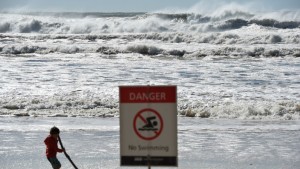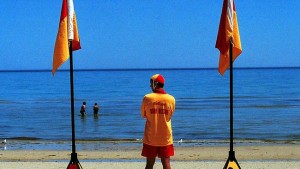I have just spent a fantastic month back in Victoria, Australia with family for Christmas holidays, spending part of the holiday at Phillip Island, a coastal town to the east of Melbourne. It was certainly one of most memorable and happy family holidays that we have had.
 Most sadly though, it has also been a memorable time for many families but in a tragic way – with numerous people drowning whilst swimming in one the many beaches Australia has to offer. I was shocked but not surprised to read in the newspapers the many incidents of people drowning over the holiday period, particularly seeing that 4 of these incidents had occurred at beaches near Phillip Island, where we had been taking our children for a swim whilst on holidays. Sadly 9 people have drowned over the Christmas period in Victoria alone and drownings are at a 10 year high nationally. Read article
Most sadly though, it has also been a memorable time for many families but in a tragic way – with numerous people drowning whilst swimming in one the many beaches Australia has to offer. I was shocked but not surprised to read in the newspapers the many incidents of people drowning over the holiday period, particularly seeing that 4 of these incidents had occurred at beaches near Phillip Island, where we had been taking our children for a swim whilst on holidays. Sadly 9 people have drowned over the Christmas period in Victoria alone and drownings are at a 10 year high nationally. Read article
Australia has some of the most amazing beaches in the world however they are also some of the most dangerous beaches in the world, with large surf and unpredictable currents & rips proving to be difficult even for the best of swimmers.
The Australian surf doesn’t discriminate – both Australians and tourists have drowned after being caught in one of the dangerous rips. Its imperative and life saving that everyone reads and learns about currents and rips on Australian beaches and adheres to the safety guidelines that Life Saving Australia has created.

So in writing this article, I hope I can contribute to educating everyone about the dangers of rips and currents in Australian beaches. I implore all of the tourists around the world who are planning to visit Australia to read about the dangers of swimming in Australia’s beaches and you speak to locals about where you should and shouldn’t swim, and always swim between the yellow flags, which are patrolled by Surf Life Saving Guards.
I have just read one of the most informative and educational interactive articles about rips and currents; How To Spot A Rip (credit and thanks to Shane Daw, Murray Copas and Karina Morgan at Surf Life Saving Australia; Isaak Newcombe, Greg Scott and Danielle Wright at Life Saving Victoria; and Rob Brander at UNSW Sydney) – I ask everyone to take the time to read the article, ensure that you understand the dangers of Australian beaches and pass on this valuable information to your friends. family and children.
Taking the family to the beach is one of life’s special moments; so please stay safe and make swimming a memorable time for happy reasons.